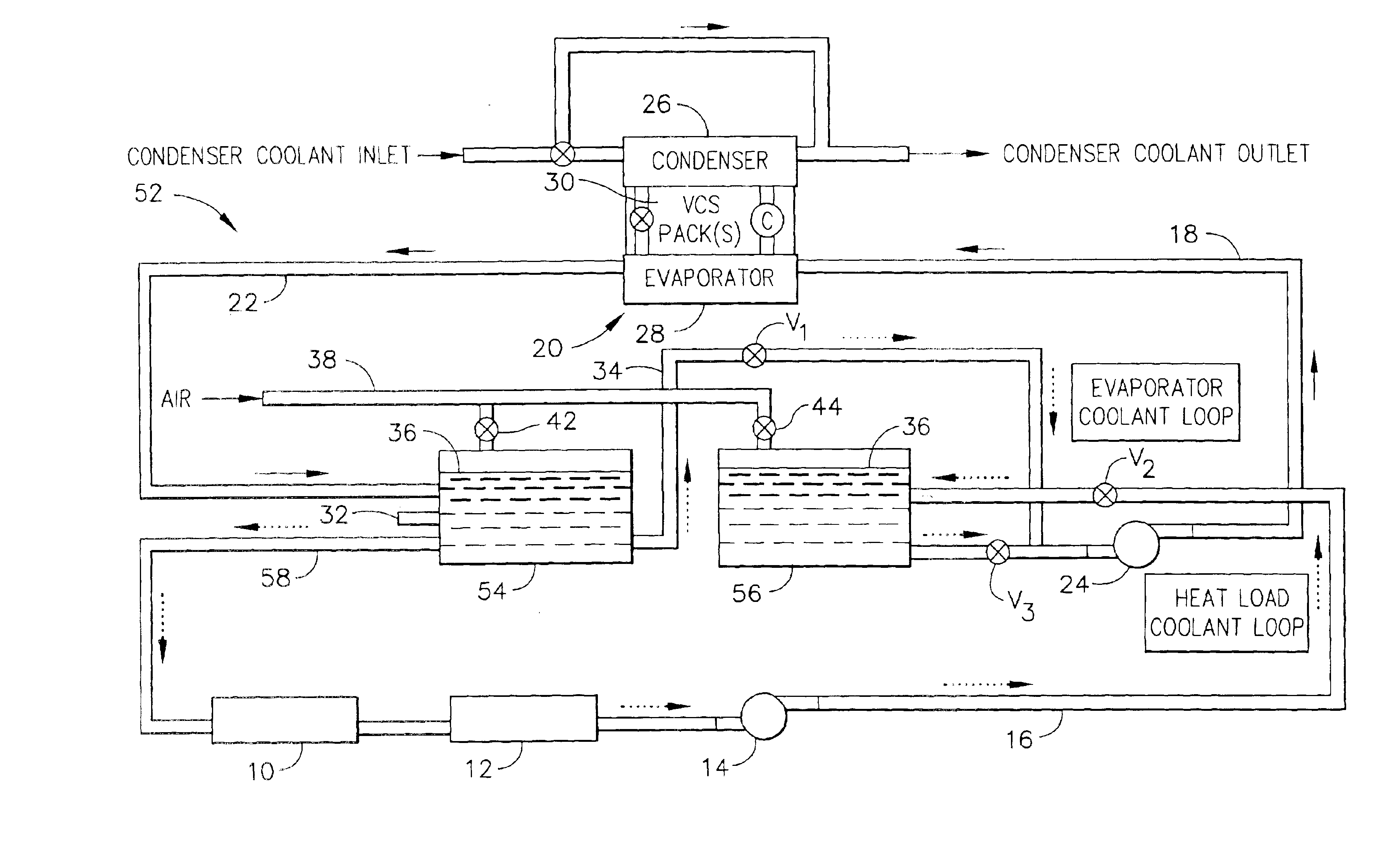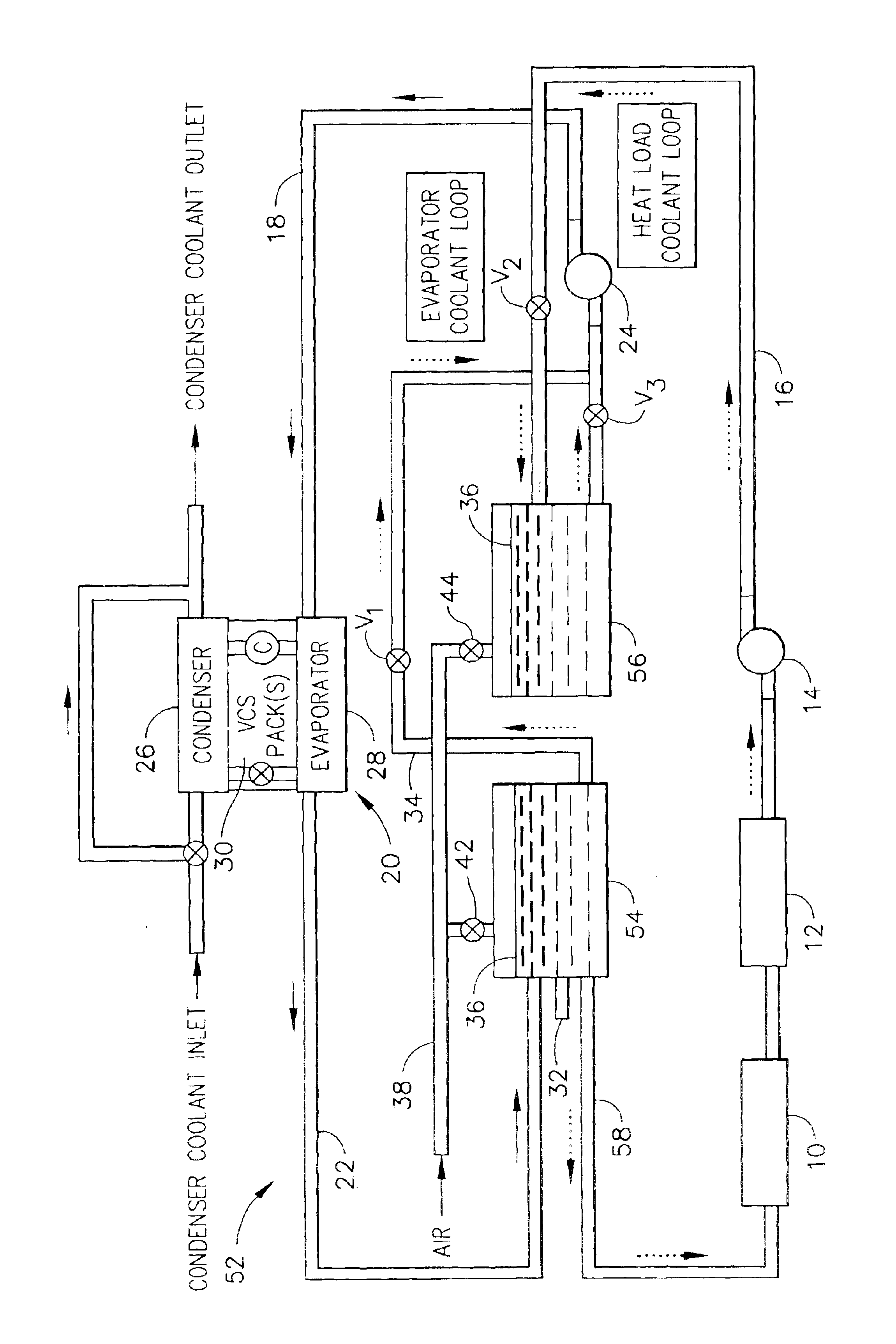Vapor cycle system (VCS) with thermal reservoirs for reducing requisite VCS power and size with intermittent heat loads
a vapor cycle and thermal reservoir technology, applied in refrigeration machines, refrigeration components, lighting and heating apparatuses, etc., can solve the problems of difficult precision cooling, large space and weight consumption of conventional systems, and high power consumption
- Summary
- Abstract
- Description
- Claims
- Application Information
AI Technical Summary
Benefits of technology
Problems solved by technology
Method used
Image
Examples
example
Referring still to the FIGURE, one embodiment of the present invention, uses VCS system 52 to provide precise thermal control to a first laser heat load 10 and a second laser heat load 12. First laser heat load 10 requires a coolant controlled input temperature of approximately 40° F. The coolant output from first laser heat load 10 is fed to second laser heat load 12.
Initially, the cold water reservoir 54 is filled with about 170 lbs of ambient temperature water. While less water may be used in this example, excess water is preferred so that there is no chance of the system running dry. In this “cool down” operating condition, valve V1 is opened and pump 24 feeds the ambient temperature water through cooldown loop output line 34, hot water reservoir output line 18, and cooling system 20. The output coolant, having the precisely controlled inlet temperature, returns to cold water reservoir 54 via cold water reservoir input line 22. Preferably, water flows through the system during t...
PUM
 Login to View More
Login to View More Abstract
Description
Claims
Application Information
 Login to View More
Login to View More - R&D
- Intellectual Property
- Life Sciences
- Materials
- Tech Scout
- Unparalleled Data Quality
- Higher Quality Content
- 60% Fewer Hallucinations
Browse by: Latest US Patents, China's latest patents, Technical Efficacy Thesaurus, Application Domain, Technology Topic, Popular Technical Reports.
© 2025 PatSnap. All rights reserved.Legal|Privacy policy|Modern Slavery Act Transparency Statement|Sitemap|About US| Contact US: help@patsnap.com


